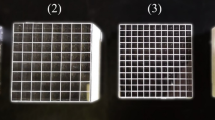Abstract
An important feature of multi ring positron tomographs is the inter plane septa, the purpose of which is to reduce random and scattered coincidences. In general, such septa also eliminate the coincidence lines of response between pairs of detectors more than one ring apart. The operation of a camera without septa must result in an increase not only in the true coincidence rate, but also in the singles, and therefore in the dead time and randoms rate, and in the scattered coincidences. A configuration option in the coincidence hardware of the 8 ring, 15 slice ECAT 931/08-12 enables a full set of 64 sinograms to be acquired when the septa are removed. The detector normalisation and transmission data for studies with the septa out can be obtained using a rotating pin source. To take maximum advantage of the additional signal, the emission data must be reconstructed using a fully three dimensional reconstruction algorithm. This paper presents an analysis of some phantom studies acquired without septa and reconstructed in three dimensions. The results are compared with data acquired with septa for the same phantoms imaged under similar conditions. It is found that, with the septa removed, the signal to noise for a uniform, 20 cm diameter cylinder improves by a factor of 2.8 in the centre of the field of view, whereas in regions distant from the centre in the axial direction, the signal to noise decreases due to the increase in scatter and randoms. An improvement in signal to noise is observed in 6 cm of the 10 cm axial length of the tomograph.
Similar content being viewed by others
References
Colsher JG (1980) Fully three-dimensional positron emission tomography Phys Med Biol 25:103–115
Defrise M, Kuijk S, Deconinck F (1988) A new three-dimensional reconstruction method for positron cameras using plane detectors. Phys Med Biol 33:43–51
Defrise M, Townsend DW, Deconinck F (1989) Statistical noise in three-dimensional positron tomography. Phys Med Biol (to appear)
Kubler W, Ostertag H, Hoverath H, Doll J, Ziegler S, Lorenz W (1988) Scatter supression by using a rotating pin source in PET transmission measurements. IEEE Trans Nucl Sci 35:749–752
Spinks TJ, Jones T, Gilardi MC, Heather J (1988) Physical performance of the latest generation of commercial positron scanner. IEEE Trans Nucl Sci 35:721–725
Townsend DW, Spinks TJ, Jones T, Geissbühler A, Defrise M, Gilardi MC, Heather J (1989) Three-dimensional reconstruction of PET data from a multi-ring camera. IEEE Trans Nucl Sci 36:1056–1065
Author information
Authors and Affiliations
Rights and permissions
About this article
Cite this article
Townsend, D., Spinks, T., Jones, T. et al. Aspects of three dimensional reconstruction for a multi ring positron tomography. Eur J Nucl Med 15, 741–745 (1989). https://doi.org/10.1007/BF00631768
Issue Date:
DOI: https://doi.org/10.1007/BF00631768




